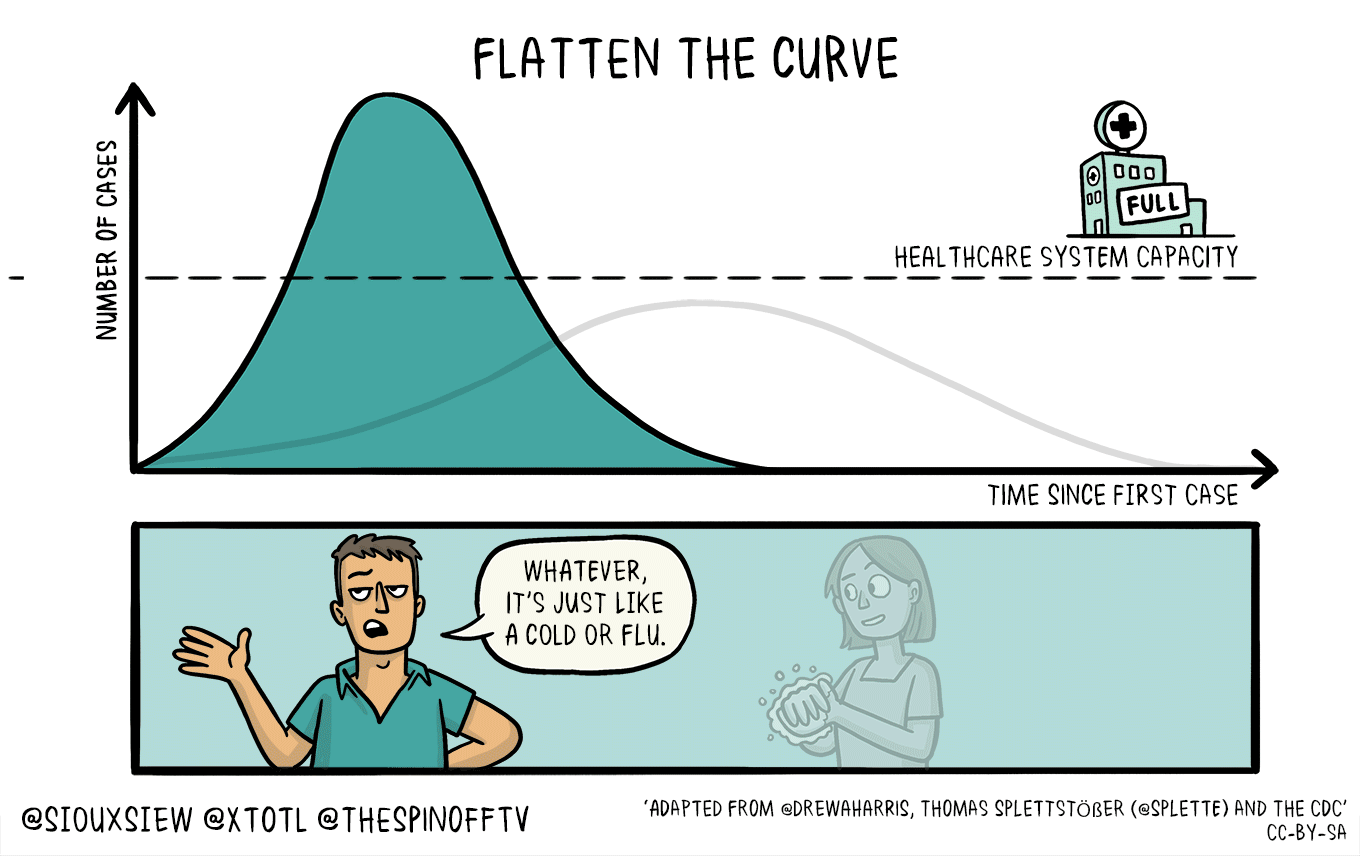Costco is out of toilet paper and CVS is out of cough syrup. Your group fitness class and your favorite restaurant are closed. Your cousin keeps posting memes on instagram about some conspiracy theory and your co-worker brags on about how she hasn’t been sick in years so she’s not worried about germs. This is not a nightmare. This is real life in 2020 thanks to COVID-19, aka the coronavirus.
On March 11th, three months from when the first cases of pneumonia were reported in China, the World Health Organization (WHO) declared COVID-19 a pandemic. With a composed and articulate delivery, WHO chief Dr. Tedros Adhanom Ghebreyesus expressed that this declaration could lead to a response of “unjustified acceptance that the fight is over” or “unreasonable fear.” He wasn’t wrong. With what seemed like an air of hope, he also reported that this declaration should not change the approach governments are taking to stop the spread, or flatten the curve. Fear is quite the motivator. As we introduce in The Basics, fear can activate our stress response system (aka our survival brain) and when that happens, reason and logic can go out the window. We have a reaction to a real or perceived threat to safety that affects our body, thoughts, emotions, and behaviors. In this scenario, COVID-19 is the trigger that activates unique fears and responses in each person. For some, the response might be fight or flight. For others, it might be freeze or fawn. Some people get angry and might fixate on finding someone to blame, other people might feel overwhelmed and shut down completely or go on with life as usual, Still others feel guilty that people are suffering and turn to people-pleasing or caregiving. We adapt.
Fear is quite the motivator. As we introduce in The Basics, fear can activate our stress response system (aka our survival brain) and when that happens, reason and logic can go out the window. We have a reaction to a real or perceived threat to safety that affects our body, thoughts, emotions, and behaviors. In this scenario, COVID-19 is the trigger that activates unique fears and responses in each person. For some, the response might be fight or flight. For others, it might be freeze or fawn. Some people get angry and might fixate on finding someone to blame, other people might feel overwhelmed and shut down completely or go on with life as usual, Still others feel guilty that people are suffering and turn to people-pleasing or caregiving. We adapt.
You may be wondering, “so what am I supposed to do about it?”

Comments (0)